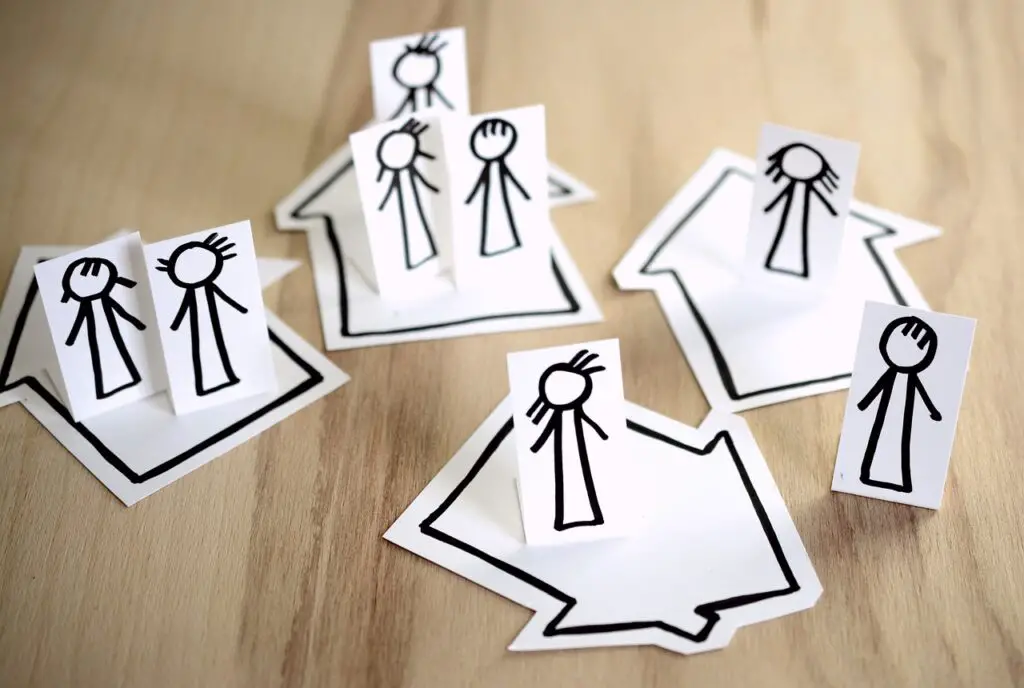The topic of family is universal. From the youngest kids beginning to learn English to the most advanced students, everyone can relate to the idea of a family. That makes it a staple of EFL/ESL teaching.

But rather than boring your students with worksheets and flashcards, can you make learning about family an engaging and enjoyable experience?
Absolutely!
This article covers five different ways you can do just that. Not every activity is appropriate for all ability levels, but regardless of who you’re teaching, there should be something here you can use.
WORD OF WARNING: Before starting activities about the family, make sure you’re aware of any family difficulties that students might have. For most people, family is a positive aspect of their lives, but for some it’s a source of stress. In these cases, be sensitive and willing to adapt.
- Look at a famous family tree
- Make family trees
- Play Two Truths and a Lie (family version)
- Do some role-play scenarios
- Make a shared, imaginary family
1. Look at a famous family tree
This is a great activity you can use with students of all levels. Choose a family: the complex British royals, the iconic Simpsons, the world famous Kardashians, or the charming Peppa Pig family. As long as there are enough family members, you can pick whatever suits your class best.
With intermediate and advanced students, you could show them the family tree with lines indicating parenthood and marriage. This will be confusing for younger students, so just present the members without the structure.
For each family member, students can think about how they are related to the others. This is a good place to practice the apostrophe S for possessives.
EXAMPLE: King Charles is Prince William’s father.
2. Make family trees
After looking at a famous family tree, it’s natural to move on to making your own.
Students can use the tree structure you presented to them with the famous family to create their own.

For young kids, it’s fun to draw a tree and cut out leaves for each family member, then they can stick the leaves on the tree. It doesn’t really matter where the leaves go.
For older and more advanced students, it’s a good challenge for them to think about how the lines and layers of their own family tree are organised. Do they have step or half siblings? What about second cousins? Do they know who their great aunts are? Or their great grandfather?
If a student doesn’t have much family, or is uncomfortable making their family tree, let them invent one of their own, or make a similar but unique version of a famous family.
3. Two Truths and a Lie (family version)
Two Truths and a Lie is a fun game that practices writing short sentences. It’s not ideal for absolute beginners, but with some guidance and structure you can play with almost any level.
It lasts about 10-15 minutes and is good with group sizes of 2-8. Saying that, you can play it with an individual student, or a large class, but you may wish to modify the format a little.
How to play
All players write three sentences about their family. Two are true, and one is a lie. For example:
- My mother’s name is Fatima.
- I have six cousins.
- My grandmother has six brothers and five sisters.
In turn, students read their sentences to the other players who have to identify the lie.
A student who correctly picks the lie gets a point. For each student who chose incorrectly, the writer of the sentences gets a point.
Everybody shows their sentences and whoever got the most points wins.
TIPS:
- Tell students not to include information that is overly personal.
- Encourage creative and unique sentences.
- Join in yourself! Students always want to know about your family, and you can introduce new language this way.
Two Truths and a Lie is one of the many games I have on my website in articles such as 9 Superb EFL/ESL Games & Activities Using Just Pen & Paper. Click the link to check it out!
4. Do some role-play scenarios
Role play is a great way to practice speaking skills in a spontaneous manner. It’s best with students who can already put basic sentences together, so unsuitable for beginners. Students under the age of 8 may struggle, too.
Role plays are the improvised enactment of a scenario. There are no scripts. Creativity and expression are the key focuses, and they’re a lot of fun for all students.
To learn more about why I love role play so much, read my article Why All EFL/ESL Teachers Should Use Role Play Activities.
Family is particularly great for role-play scenarios, because there are so many interactions between family members that students experience all the time. Put your students in pairs (or threes if you have an odd number). With an individual student, play one of the roles yourself.

Here are 2 scenarios you can use straight away:
In pairs, just assign the roles A and B. For groups of three, add in role C as a supplementary character.
Bad Grades
| STUDENT | ROLE |
|---|---|
| A | You are a kid who tried really hard at school, but your grades are bad. |
| B | You are the parent of student A and you are angry about their bad grades. |
| C (optional) | You are student A’s teacher and you know why the grades are bad. |
Grandpa’s birthday party!
| STUDENT | ROLE |
|---|---|
| A | You are planning your grandpa’s birthday party. You want to spend lots of money and make it exciting! |
| B | You are planning your grandpa’s birthday party. You want it to be quiet and calm, and not too expensive. |
| C (optional) | You are the grandpa (or grandma, if you prefer) |
5. Make a shared, imaginary family
I’ve found that students enjoy making characters. Giving them a name, describing them, thinking about their hobbies, likes, personalities, etc. are all engaging and practice a lot of different skills.
You can use this idea to develop language around the family.
This activity might get a bit complicated with more than 15 students, so if you have a bigger class than that, split them up into groups which each make their own family. I’d also avoid it with absolute beginners.
Start with one character who is the “centre” of the family. This should be a man or a woman who is old enough to be married and have kids, but their parents are still alive.

Use this character as the model for the activity, giving examples of the kind of thing you want students to practice.
EXAMPLE: Susan.
Susan is 45 years old. She works as a nurse in a hospital and loves cats. Her hobbies are painting, hiking and reading funny stories. She has short, ginger hair.
You can add or remove as much information as you like to the profile according to the ability of your students and what you want to focus on in the activity.
Now assign each student a member of Susan’s family to create. You can do this by student choice, or pick randomly, using a random number generator and matching numbers to a different family member.
For example:
- Mother
- Father
- Sister
- Brother
- Son
- Daughter
And to make it more advanced, you can increase the selection:
7. Cousin
8. Uncle
9. Aunt
10. Niece
11. Nephew
12. Step sibling
13. Half sibling
14. Second cousin
Try to get a balance of different family connections.
When each student has made their characters, they can work out how they are related. For example, Susan’s mother is the grandmother of Susan’s son. Students can write down these connections.
For extra fun, think up some role-play scenarios that could be done between certain family members – planning a birthday party is a good one, so is a family meal that goes wrong.

Happy families
Talking about family is always a fun part of teaching EFL/ESL. I love hearing about how students interact with their siblings, or learning about that student who seems to have hundreds of cousins all around the world.
These activities can help unlock that positive aspect of your students’ lives and help them progress in all their English skills.
For more activities, games, role-play scenarios and lesson plans, sign up to the Enchanted ESL Newsletter. Every month I send out a whole bunch of free resources, and that’s on top of the ones you get as soon as you join. Follow this link to the signup page now!







